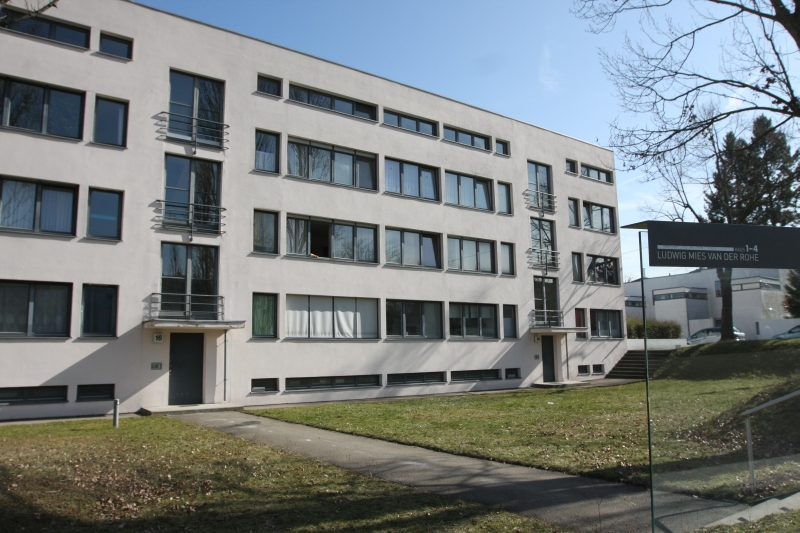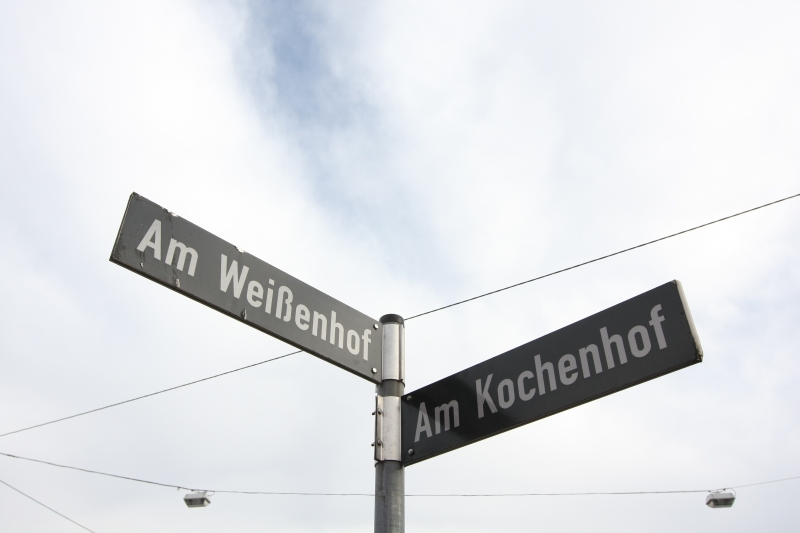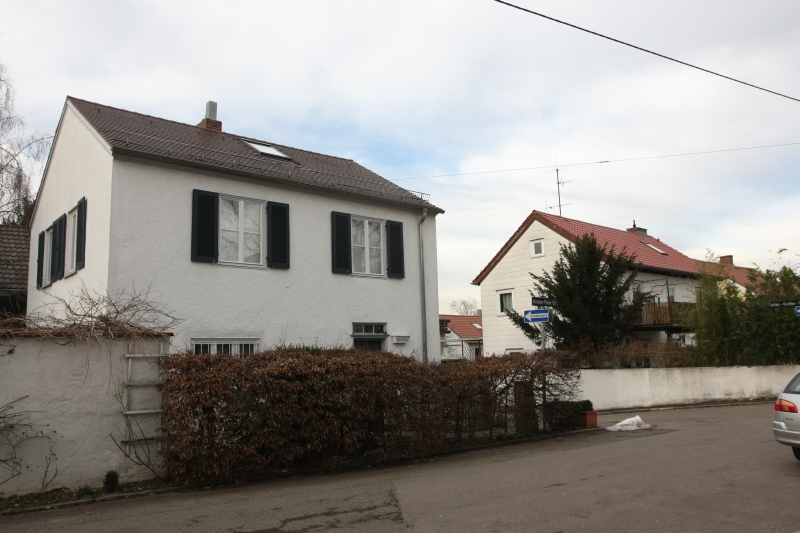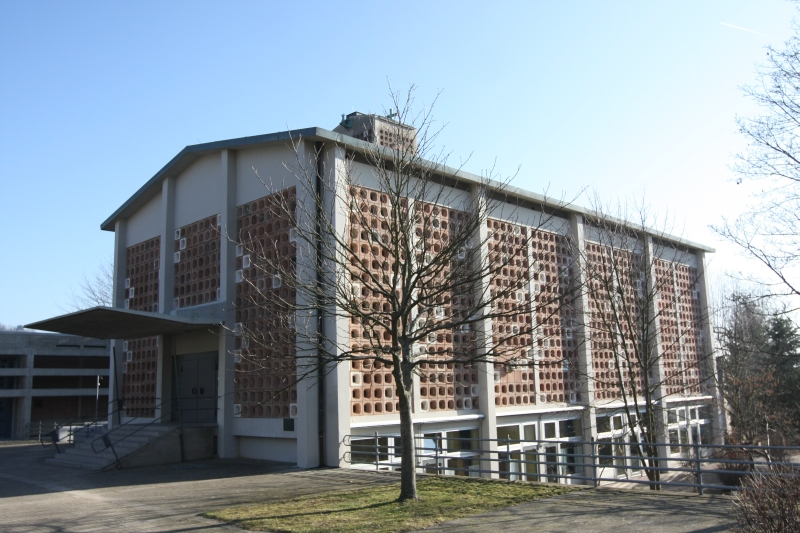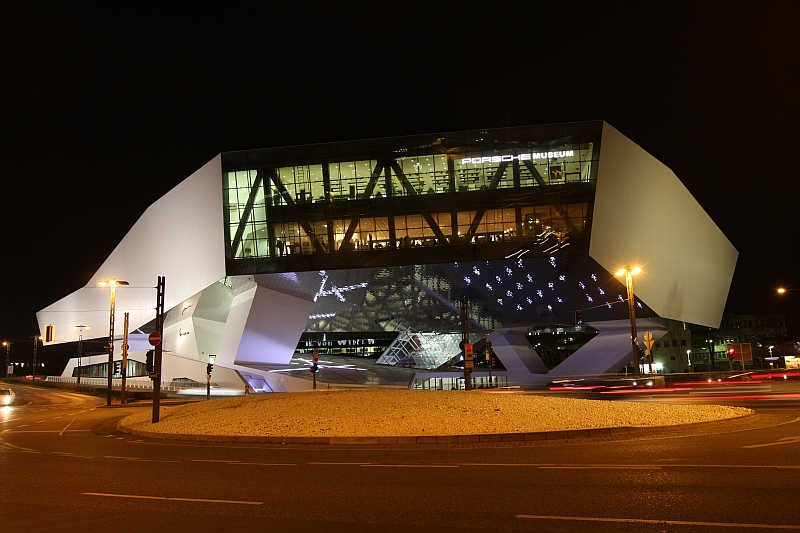Talking Stuttgart Architecture
Enter “Stuttgart architecture” into a well known search engine and you”ll get an awful lot of responses relating to the Stuttgart 21 Central Train Station redevelopment project.
A situation which, in our opinion, does the city and its architecture a great disservice. For Stuttgart’s architecture tradition is perhaps richer and more interesting than anywhere else in Europe.
And yes we’re talking about modern, 20th century architecture.
What happened before the flushing toilet and immunisation is really of no great interest to us.
The most famous architectural monument in Stuttgart is without question the Weissenhofsiedlung. Overseen by Ludwig Mies van der Rohe the Weissenhofsiedlung was erected in 1927 and was positioned as an exploration of how architecture and interior design could and/or should respond to the social and economic realities of post-war Europe.
Despite the best efforts of the Royal Air Force, the NSDAP and the indifference of the democratically elected powers in Stuttgart, several of the constructions still survive today including those from Le Corbusier, J. J. P. Oud, Mart Stam and most impressively for us, Hans Scharoun.
A stone’s throw from the Weissenhofsiedlung is an equally important if diametrically positioned architectural project: The Kochenhofsiedlung.
Its all to easy to get caught up in Bauhaus euphoria and to believe that only Gropius, Mies van der Rohe and co were defining architecture in inter-war Germany.
They weren’t
In these pages we have often referred to the 1914 rift in the Deutscher Werkbund. In the red corner Henry van der Velde, Walter Gropius and the other representatives of European Modernism. In the blue corner Hermann Muthesius and the traditionalists, including numerous members of what was to become known as the Stuttgarter School.
And it was this Stuttgarter School based around Paul Schmitthenner and Paul Bonatz who successfully argued that if the modernists could be given space for their new-fangled fantasies so to should the more traditional view be given space to represent itself.
Or at least eventually successfully argued.
For although Paul Schmitthenner began with his planning in 1927 it was not until the Machtergreifung of the NSDAP that the project could be realised, being presented to the public in 1933 under the title Deutsches Holz für Hausbau und Wohnung [German Wood for House Construction and Homes]. A turn of events that, somewhat understandably, still taints the project.
Essentially a garden estate in the finest tradition of the Arts and Crafts movement the Kochenhofsiedlung is a much smaller affair than its near, and more illustrious, neighbour – but no less fascinating or worthy of a visit.
Sitting comfortably between, or perhaps better put straddling, the two movements is the city’s most famous architectural son, Egon Eiermann.
The city’s most famous architectural son although he was not from there and never lived there…..
However, following his war enforced move from Berlin to Baden-Württemberg Egon Eiermann realised numerous important projects in and around Stuttgart, projects which not only in many respects still define the city and its environs but which much more were important milestones in Eiermann’s career and which involve elements that Eiermann reworked and redeveloped in future projects. The most notably works being the Matthäuskirche Pforzheim, the Horton Department store in Stuttgart city centre and his administrative complexes for IBM Deutschland in Vaihingen and Böblingen.
Adding to such “historic” works, Stuttgart has in recent years witnessed the construction of numerous new cultural buildings including the Porsche Museum, Mercedes Benz Museum, the new Stadtbibliothek or the Kunstmuseum Stuttgart, and today can boast a collection of buildings from many of the most important, influential and progressive architects of the 20th century.
And we’ve not even started discussing Stuttgart 21. But then that is probably for the best.
In addition to its wealth of architectural creations, Stuttgart is also home to probably more architects than anywhere else in Germany. Whereas in most German cities you can’t walk more than 200 meters without passing a doctor’s surgery, in Stuttgart its architect’s offices. They are everywhere.
In context of all the above, and to completely misappropriate Jehs+Laub’s assertion that “…. an awful lot of creativity originates in Stuttgart but you don’t necessarily know that because no one talks about it“, we’ve decided to talk to Stuttgart architects about what is happening, how it is happening and why it is happening, and so in the coming weeks we will bring you a series of interviews with representatives of the Stuttgart architecture community.
It won’t be a definitive overview of contemporary Stuttgart architecture, but we hope it will at least entertain and inform.
Tagged with: Egon Eiermann, Kochenhofsiedlung, Stuttgart, Weissenhofsiedlung
